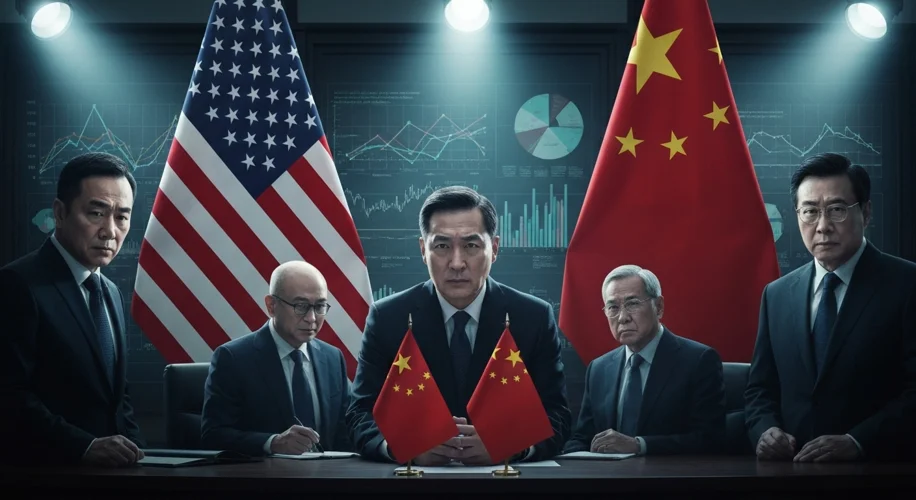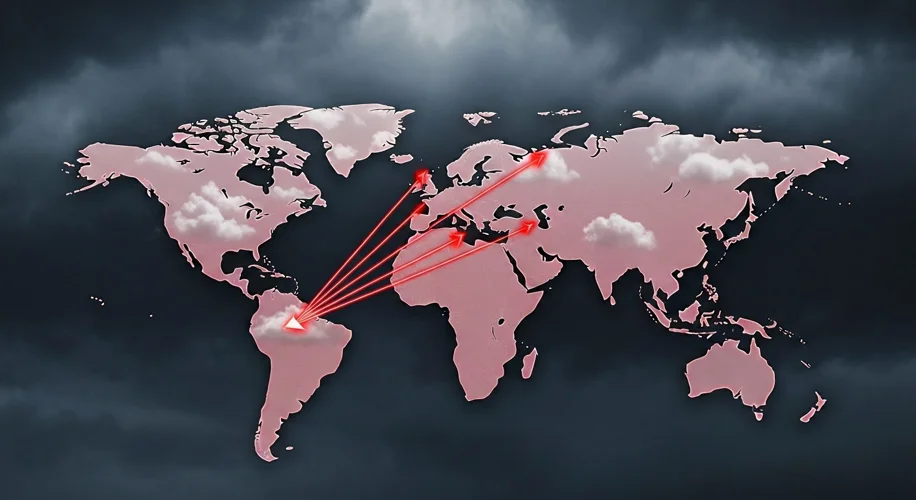The year is 2018. Across the Pacific, a storm is brewing, not of typhoons and tsunamis, but of tariffs and trade disputes. The United States, under a new administration, has set its sights on China, accusing it of unfair trade practices, intellectual property theft, and a burgeoning trade imbalance.
The seeds of this monumental clash, however, were sown long before. For decades, the relationship between the US and China had been a complex dance of cooperation and competition. China’s rise as a global manufacturing powerhouse, fueled by its entry into the World Trade Organization (WTO) in 2001, had brought immense economic benefits but also growing pains. For American industries, the influx of cheaper Chinese goods often meant job losses and factory closures, a sentiment that resonated deeply with a segment of the American populace.

Enter Donald Trump. His campaign promises to “Make America Great Again” heavily featured a protectionist stance, directly targeting the perceived unfairness of international trade, particularly with China. Upon taking office in January 2017, these promises began to materialize. The initial salvos were fired early in 2018. In March, President Trump announced sweeping tariffs on steel and aluminum imports, citing national security concerns. While initially applied broadly, exemptions were eventually granted to some allies, but China was not among them.
The real escalation, however, came with Section 301 of the Trade Act of 1974. This legislation empowered the U.S. Trade Representative to investigate and act against unfair trade practices by foreign countries. The USTR’s report detailed a litany of concerns, including forced technology transfer, discriminatory licensing practices, and cyber-enabled intellectual property theft. In response, the Trump administration announced a proposed tariff of 25% on approximately $50 billion worth of Chinese imports, targeting sectors deemed to benefit from these alleged practices.
China, predictably, did not stand idly by. It retaliated swiftly, announcing its own tariffs on a range of American goods, including agricultural products like soybeans, pork, and certain fruits. The tit-for-tat escalation began, creating a palpable sense of uncertainty in global markets. Businesses on both sides of the Pacific, and indeed worldwide, found themselves caught in the crossfire. Supply chains, meticulously built over years, were suddenly thrown into disarray.
What followed was a period of intense negotiation and, at times, diplomatic brinkmanship. Key moments involved extensions and deadlines. The administration would announce tariffs, China would retaliate, and then, through a series of high-level meetings and phone calls, temporary truces or reprieves would be negotiated. For instance, the initial deadline for the imposition of tariffs on Chinese goods was extended multiple times throughout 2018 as the two sides engaged in discussions. These extensions were critical; they provided breathing room for negotiators and prevented a complete breakdown of communication, even as the underlying tensions remained.
This period was characterized by a fundamental difference in perspective. The US administration viewed these actions as necessary to level the playing field and protect American jobs and industries. They argued that decades of unchecked trade deficits and unfair practices had hollowed out American manufacturing. China, on the other hand, maintained that its trade practices were in line with international norms and that the US was resorting to unilateralism and protectionism, undermining the global trading system.
The consequences were far-reaching. Beyond the direct economic impact on producers and consumers, the trade war introduced a significant element of geopolitical friction. It strained diplomatic relations, creating an atmosphere of distrust that seeped into other areas of bilateral engagement, from security to technological cooperation.
Furthermore, the uncertainty generated by the ongoing disputes made long-term business planning incredibly difficult. Companies hesitated to make new investments, and global economic growth forecasts began to be revised downwards. Emerging markets, heavily reliant on global trade, were particularly vulnerable.
The early days of Trump’s trade war with China were not just about tariffs; they were about fundamentally challenging the established global economic order. They highlighted the enduring power of national interests in shaping international relations and demonstrated how economic policy could become a potent tool of geopolitical strategy. The story of these initial tariff disputes serves as a crucial chapter in understanding the evolving dynamics between the world’s two largest economies, a chapter whose repercussions continue to be felt today.

